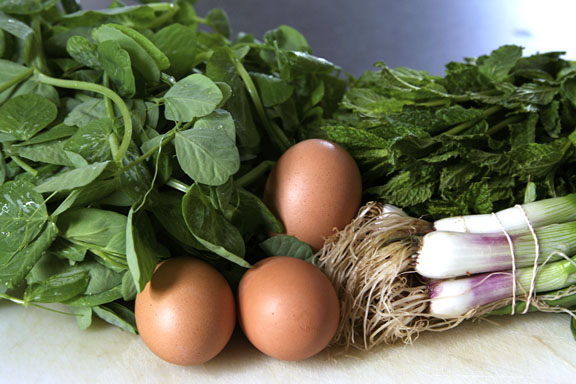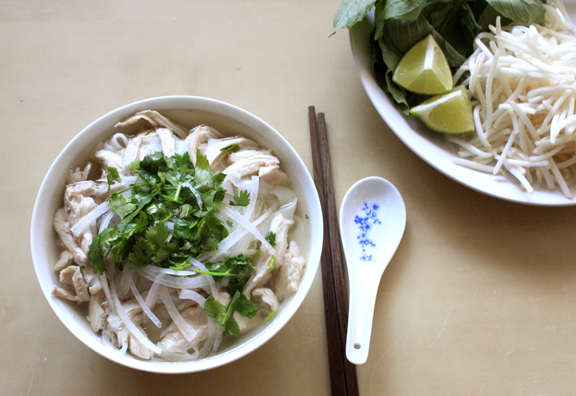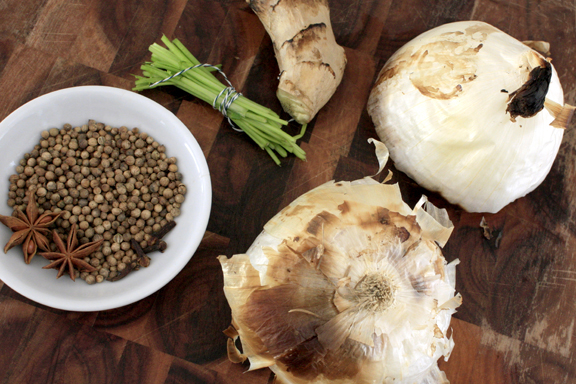Grocery shopping is always a challenge when you live in a big city. The grocery stores are smaller, prices are higher, parking is more of a hassle (and if you’re not driving, well, then you have to deal with hauling groceries home), and kitchens are teeny tiny. My own kitchen is outfitted with an apartment-size oven and dishwasher, which is to say — miniscule! It’s a challenge to cook from home even if you wanted to. Over the past few years, I’ve been slowly learning how to make do here, and it’s always an evolving process.
Stocking up. If you don’t cook regularly or don’t have a household to feed, cooking can feel like a special event, and grocery shopping can often revolve around only what you foresee eating in the immediate future. But instead of planning a grocery list around a couple dishes you feel like this week (don’t get me wrong, I do plenty of this, but it’s hard to sustain on a daily/weekly basis), it can be helpful to try planning your regular menu around what’s available — what’s in season, what’s on sale, and what’s near you. You can always store things by freezing, canning, or putting away in a dry, cool place for the colder seasons or simply busier weeks. Cooks are always touting the benefits of having a well-stocked pantry, which makes it easier to cook last-minute meals, which in turn means it’s easier to eat at home and to eat more healthily.
When I was growing up, my mom scoured the weekly grocery store circulars for sales and coupons. For particularly good sales, she often made special trips out to that store just to buy that one sale item in bulk. Advertisers never got the better of her — she often was there for that sale item alone and then got the rest of what she needed elsewhere. These days, I’ll only make a special trip like that when I come across a particularly great deal. And although I’ve always been in awe at master coupon-clipping folks, I find that most coupons are for things I don’t usually buy.
Since distance (and traffic!) can negate the advantage of a good sale here, and space is limited in my apartment anyhow, I’ve instead come to rely on a rotation of grocery stores I frequent for various reasons. I usually limit myself to only one grocery store each week, which means I know I’m not getting the best price on everything, but it’s a tradeoff that I make. I offset this by not going to the same store every week. I alternate between more general grocery stores and more specialized ones, stocking up in advance on items I know won’t be available at the store I visit the following week.
Most weeks I actually go to Costco (more on this later), and that is one place I often do pair with a general grocery store, where I can get things that we don’t need in bulk. Luckily, there’s a Harris Teeter just behind our nearest Costco, so I sometimes hit up both when I have time. But when I don’t, I can make do with just a Costco run and what I have in my pantry and freezer. Some of what we buy in bulk at Costco will last two weeks (or more), so the following week I’ll often go to one of my other stores. Sometimes it’ll be Shopper’s, which I started frequenting because it’s next to Target. Shopper’s is not your fancy grocery store, but I was actually surprised to discover what a wide selection of international and health food items are available there. And their prices tend to be lower than, say, Harris Teeter. Target also is a great place for food-shopping — I find their dry goods are well priced, but for produce I stick to grocery stores. About every month or two, I’ll make the trek out a bit farther to Grand Mart, which is one of the larger Asian grocers that’s closest to me. I stock up on all my Asian ingredients as well as cheap produce. While I’m there I pick up things like lemons and limes, carrots, potatoes — basic pantry items that cost more elsewhere and that last a little while. Every now and then I’ll go to Trader Joe’s, which I love and would frequent much more except that it’s a bit out of the way for me.
This past summer, my husband’s co-worker convinced her CSA to start delivering to their workplace if they could get together enough interested people. So I finally got to give CSAs a try! It was pretty fun opening up our box each week to see what we’d find — a nice change from my well-worn weekly routine! We’re also lucky to live close to Eastern Market, so many Sunday mornings you can find us walking there for coffee and people watching. In the spring I love to pick up fresh herbs and fruit there. It’s nice to get in some support for our local farmers to help offset all the Costco trips I make. :P Which brings me to my next topic…
Favorite prepared items. I have to confess that I generally love Costco so much I dearly miss it whenever I am in China for long periods of time. I have to be careful when I’m there, though — because things are sold in bulk, your bill can quickly add up after just a few items! The reason why I go to Costco many weeks is hands-down because of all the precut, pre-washed, sometimes even organic produce you can buy in bulk. Not everything is a great deal, but my regular items include broccoli, spinach, berries, organic milk, eggs, whole chicken, and salmon. I also like to get cheese there. It’s a lot, but it lasts a while (and I love cheese). My other favorite place for stocking up on both cheese and ready-made meals is Trader Joe’s. The cheese selection and prices are just unbeatable there. And I particularly love TJ’s dry boxes of Indian Fare curries. I always stock up on these, as well as naan that I divide into one-meal portions and freeze — these make such great packed lunches during busy weeks. Lately, I’ve also been wondering about Amazon for things like whole wheat pasta in bulk too.
So there you have it, my weekly grocery shopping process. What stores do you frequent, and what are some of your favorite items to get there?

























Connect with us